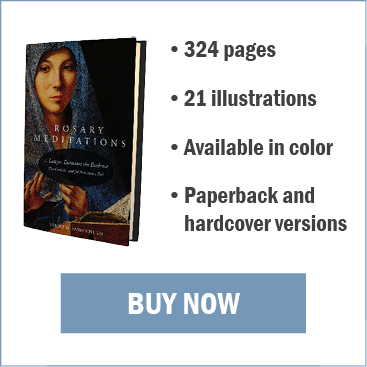
The Lenten Season
“Now after John was arrested, Jesus came into Galilee, proclaiming the gospel of God, and saying, ‘The time is fulfilled, and the kingdom of God is at hand; repent, and believe in the gospel.”
Mk 1:14–15
The Lenten Season is upon us, commencing yesterday, Ash Wednesday, and continuing through to the celebration of the Paschal Mystery (Easter Triduum) that ends on April 15. For the Catholic Church, Lent is the primary penitential season of the liturgical year, marked by such activities as receiving ashes, reading daily devotionals, making pilgrimages, and voluntary fasting.
The ritual of Lent that we observe today has its origin in two traditions. The first is in pre-Christian celebrations held to welcome Spring. In fact, the word lent derives from the Anglo-Saxon word lencten, which means “springtime” and referred to the gradual lengthening of daylight during the transition from Winter to Spring.
In the early days of Christianity, this celebratory time of year coincided with the preparation for the Easter feast, or Pascha, which lasted one to two days; there is record of Saint Iranaeus of Lyons speaking of a forty-hour preparation for Easter. In those days, however, the Easter vigil was closely tied into baptismal rituals. Candidates for baptism into the Church underwent a period of fasting and preparation to support a Christian lifestyle. Gradually, this ritual evolved into both baptismal candidates and those already baptized participating in the tradition of fasting and penance.
By the fourth century, Lent had become an annual spiritual ritual when Christians prepared for the upcoming celebration of Christianity’s fundamental belief—the Resurrection of Christ. Forty* days of preparation and penitence for the Easter vigil was first mentioned in teachings from the Council of Nicaea (AD 325); after the Council, the Lenten period was officially fixed at forty days.
Why forty days? While the number 40 is significant in the Bible—Noah and the Flood, Moses on Mount Sinai, the Hebrews wandering in the desert—forty days of Lent reflects the amount of time Jesus spent in the desert fasting and praying before starting his ministry.
Lent is, as Pope John Paul II noted, a “summons to penitential living.” When we are marked with ashes on Ash Wednesday, we are reminded that life is transitory and we are destined to die; we acknowledge the desire to one day be with Jesus in Heaven. When we are marked ashes, we proclaim that we are accepting a life of penance; we acknowledge the desire to “repent, and believe in the gospel.”
As we prepare for Easter, we use these days of Lent to fully understand and embrace the sacrifice Jesus made for us on the Cross. Like Jesus in the desert, we pray and we fast. We acknowledge the temptations of this world and find strength in the knowledge of the plan of salvation devised by the Father and made possible through our Lord and Savior, Jesus Christ.
Lent officially ends with the proclamation of the Exsultet, “Rejoice, O Heavenly Powers,” during the Mass of Holy Saturday.
DID YOU KNOW?
- Shrove Tuesday: From whence does “Shrove Tuesday” get its name? In early Christianity, Christians went to confession before the start of Lent, on the Tuesday before Ash Wednesday. The Middle English word shriven means “confession”; hence, Shrove (confession) Tuesday.
- Pretzels: During the holy season of Lent, early Christians were not allowed to use eggs, milk, or fat. Because of this, European Christians made dough of flour, water, and salt only. They rolled the dough into small breads, shaping them into the form of arms crossed in prayer. These bracellae—“little arms” in Latin—were called “bretzel” by the Germans. Today, we know them as pretzels.
*NOTE
While March 1 to April 15 constitutes forty-six days, the six Sundays occurring during the Lenten Season are not counted because Sunday is a feast day and the rigors of Lenten fasting are in abeyance; hence, Lent is forty days.
